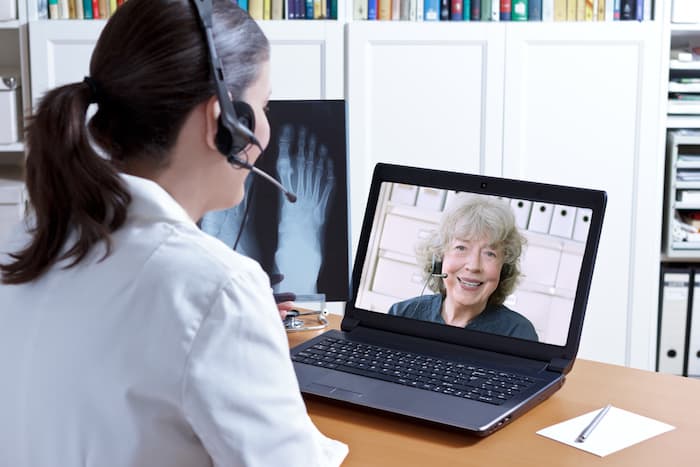The COVID-19 pandemic has changed everyday life in many ways. One of these changes is the newfound popularity of telehealth. Both patients and healthcare providers take a far more favorable viewpoint of telemedicine than they held even just two years ago.
Perhaps you have also discovered how convenient it is to be able to reach your doctor or other healthcare provider in the digital world. Research suggests that patients and healthcare professionals are excited about the opportunity to take advantage of receiving medical care wherever it is safest and most convenient for the long-term.
Consumers overwhelmingly support having the ability to access examinations, checkups, and even therapy sessions via technological means. But despite telehealth’s growing popularity, and its clear impact on the healthcare industry, healthcare facilities are still facing an uphill battle from lawmakers who are slow to finalize some of the rule waivers that made telehealth possible during the worst of the pandemic.
For now, patients can relax in the knowledge that the ability to reach out to healthcare providers in the digital realm is not going to disappear. With many barriers now removed, it is likely that access to telemedicine will improve rather than decline. However, there needs to be agreement between healthcare providers and policymakers about how to move forward.
Companies that stepped in to make telehealth services available during the pandemic, like digital health entrepreneurs, also don’t need to panic. The benefits of their models for providing medical care are proven. That is, patients like and may even prefer telemedicine, and the use of this technology not only improves outcomes but also reduces costs. Clearly, most of the evidence is on the side of broadening the reach of telemedicine rather than constraining it.
Venture Capital and Telehealth
With the designation of a Public Health Emergency, or PHE, the COVID era helped to transform telemedicine into an indispensable, real-world tool. Many consumers say that they plan to continue using telehealth services, and providers seem eager to continue the trend as well.
This suggests that venture capitalists who invested heavily in telemedicine have many reasons to be optimistic. Unfortunately, the state regulatory waivers that made it easy for telemedicine to get up and running during COVID may begin disappearing, which is bound to cause confusion for these entrepreneurs, especially those who have operations branching across numerous states.
Abrupt Waiver Changes on the Horizon
More than a dozen states instituted an expedited process through which out-of-state physicians were enabled to provide telehealth services to recipients in their state. However, states such as New York and Florida are beginning to repeal many of the waivers that made access to telehealth services more streamlined for consumers and others soon will follow. Repeal of these waivers is causing worry among telemedicine entrepreneurs, but it remains possible to find legally compliant and scalable solutions that could lead to continued growth and success.
Some experts in the industry are projecting the hazards of a telehealth cliff, in other words, the sudden cessation of telemedicine services. Of particular concern are Medicare beneficiaries, whom it is feared will lose access to imperative options for virtual care based solely on rules imposed by outdated legislation.
As an example, advocates of telemedicine cite concerns over arbitrary restrictions with regard to patient location, which is normally used to help determine their eligibility to receive virtual care. Advocates would like to see these location restrictions removed, and they also are asking Congress to ensure that telehealth services be made available at rural health centers, critical access hospitals, federally qualified health facilities, and long-term care centers.
Telehealth and Senior Care
One segment of the population that has greatly benefited from the increased availability of telemedicine is seniors living in skilled nursing facilities or other long-term senior care centers.
Nursing homes were particularly hard hit by the pandemic, but telehealth made it possible to keep patients safer. The change also reduced stress for residents and provided better access to services. Telemedicine is a convenient and beneficial solution for seniors living in a variety of long-term care facilities. During the pandemic, healthcare providers cited numerous benefits for residents including the ability to avoid travel, saving of organizational resources, better access to care, and even improved communication.
As being transported to a hospital or other healthcare facility may be stressful and even traumatic for seniors, it can be immensely reassuring for a resident to be put on a camera-enhanced call with a nurse or doctor to make an initial assessment. This may lead to an intervention plan that allows the resident to be treated without leaving the nursing home.
The Future of Medicine
It is vital that at least some of the waivers that were introduced during COVID be made permanent, especially those that relate to expanded Medicare coverage. Such waivers are required to bring significant benefits to the country not only from a health perspective but also from an economic one.
It is not a foregone conclusion that regulation will inhibit innovation. Instead, it can be viewed as a means of developing telehealth from its current status to where it needs to be so that it can offer greater benefits to a larger portion of the population.








